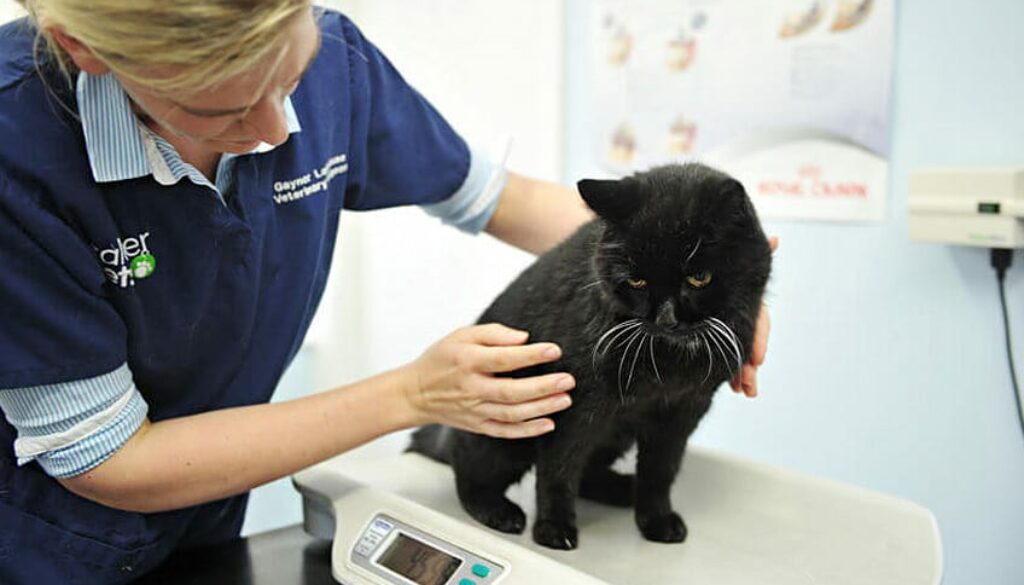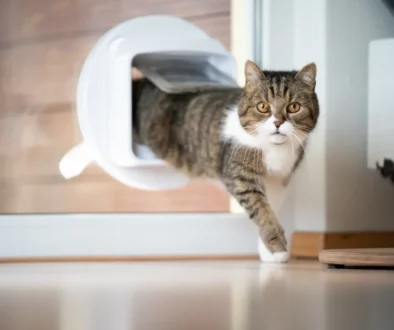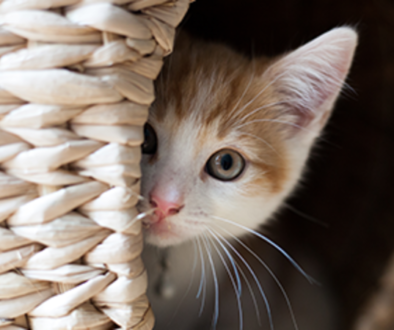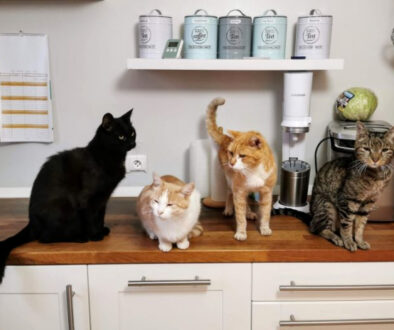Training Your Cat for Vet Visits: Stress-Free Care
Visiting the vet can be a daunting experience for cats. The unfamiliar scents, sounds, and environments can trigger immense anxiety, making it a challenging endeavor for both pets and their owners. However, with the right training and preparation, you can make vet visits less stressful and more comfortable for your feline companion. In this article, we will explore various techniques and tips that help in training your cat for vet visits and ensuring stress-free care.
Understanding Feline Anxiety: The First Step to Stress-Free Care
To effectively train your cat for vet visits, it is crucial to understand the underlying causes of anxiety. By empathizing with your furry friend and addressing their fears, you can create an environment where they feel safe and secure.
Cats and Stress: What Triggers Anxiety?
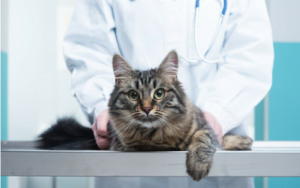 As natural creatures of routine, cats can become increasingly stressed when confronted with unfamiliar situations, abrupt changes, or potential threats. So, what are some common triggers that can cause feline anxiety during vet visits? Let’s take a look:
As natural creatures of routine, cats can become increasingly stressed when confronted with unfamiliar situations, abrupt changes, or potential threats. So, what are some common triggers that can cause feline anxiety during vet visits? Let’s take a look:
- Strange smells and noises in the clinic: The clinical environment, with its unique scents and sounds, can be overwhelming for cats. The unfamiliarity can trigger fear and anxiety, making them uncomfortable and apprehensive.
- Being confined in a carrier: The carrier itself can be a significant source of stress for cats. It represents a small, enclosed space that restricts their freedom of movement. Additionally, being placed in a carrier can be associated with previous negative experiences or the anticipation of unpleasant procedures.
- Fear of being handled by strangers: Cats are territorial animals and may feel uneasy when strangers approach and handle them. The combination of unfamiliar scents, voices, and physical contact can trigger anxiety and defensive reactions.
- Previous negative experiences at the vet: Cats have excellent memories, and if they have had negative experiences during previous vet visits, they may develop anticipatory anxiety. These experiences can range from unpleasant procedures to perceived mistreatment, leading to fear and resistance during subsequent visits.
The Training Process: Patience, Consistency, and Bonding
Training your cat for vet visits requires patience, consistency, and building trust. The goal is to desensitize your feline companion to the various stress-inducing factors gradually. By taking small steps and prioritizing their comfort and well-being, you can create a stress-free experience for both you and your cat.
Remember, cats are intelligent beings with unique personalities. It’s important to tailor the training process to suit their individual needs. Here are some techniques to help you successfully train your cat for stress-free vet visits:
Familiarize Four Cat with the Carrier
The carrier plays a significant role in ensuring a calm journey to the vet. Start by choosing a carrier that provides enough space for your cat to stand, turn around, and lie down comfortably. Make the carrier a positive and familiar space by leaving it open in a quiet area at home. Place familiar bedding or a favorite toy inside, and reward your cat whenever they voluntarily approach or enter the carrier.
Gradual Training and Desensitization
Help your cat feel more comfortable by gradually increasing their exposure to the carrier. Begin by closing the carrier door for short intervals while offering treats and affection. Slowly increase the duration of closed-door time, ensuring your cat remains relaxed. By associating the carrier with positive experiences, you can reduce their anxiety.
Handling and Socialization
Cats can become anxious when handled by strangers, such as veterinarians and technicians. To alleviate this fear, start by familiarizing your cat with handling at home. Gently stroke their body, gradually increasing the duration and pressure. Mimic ear and mouth inspections like those done during vet exams.
Reward your cat with treats, praise, and playtime after each successful handling session. Socialize your cat by inviting friends or family members to interact with them, rewarding positive interactions with treats and pets. Gradually increase the diversity of social experiences to mimic the veterinary environment.
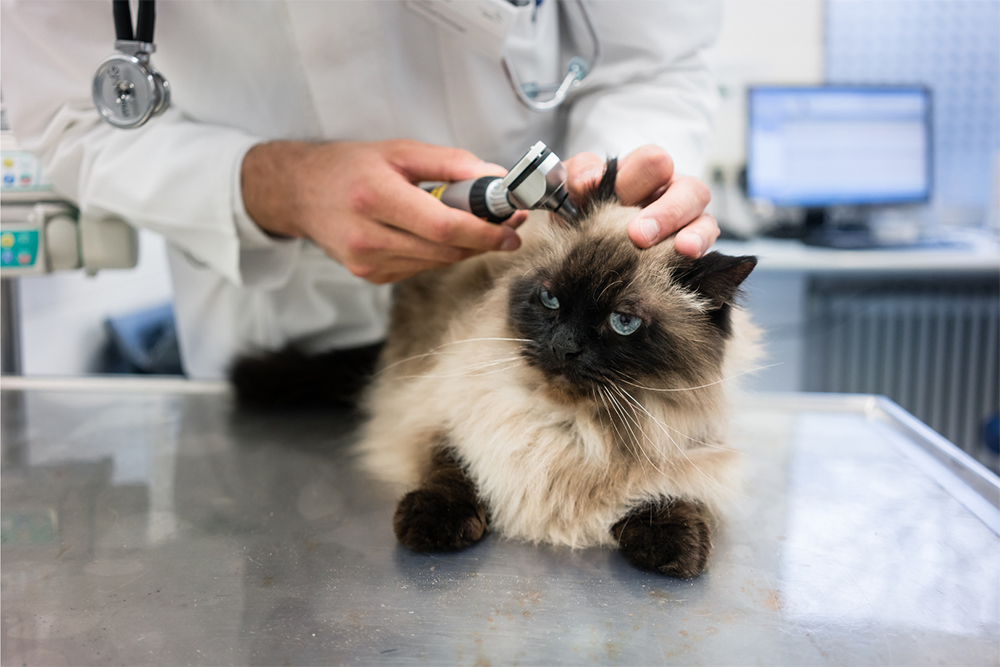
By following these training techniques, you can help your cat overcome their anxiety and create a positive association with vet visits. Remember, each cat is unique, and it may take time to see progress. Be patient, and consistent, and always prioritize your cat’s comfort and well-being.
Acclimating Your Cat to the Carrier: Ensuring a Calm Journey
The carrier is often a source of stress for cats, as they associate it with unfamiliar places and possibly uncomfortable procedures. By making the carrier a positive and familiar space, you can ease your cat’s anxiety during transportation.
1. Choosing the Right Carrier: Comfort and Safety
Selecting the proper carrier is crucial for your cat’s well-being during travel. Opt for a carrier that provides enough space for your furry friend to stand, turn around, and lie down comfortably. Additionally, consider the following:
- Hard-sided carriers offer more protection.
- Ensure the carrier has secure locks to prevent escapes or accidental openings.
- Place a soft blanket or towel in the carrier for added comfort.
2. Making the Carrier a Positive Space
To encourage your cat to view the carrier as a safe haven, follow these tips:
- Leave the carrier open in a quiet area at home.
- Place familiar bedding or a favorite toy inside the carrier.
- Offer treats and praise whenever your cat approaches or enters the carrier voluntarily.
3. Gradual Training and Familiarization
To familiarize your cat with the carrier, follow these steps:
- Gradually increase the duration of time your cat spends in the carrier.
- Begin by closing the carrier door for short intervals, rewarding your cat with treats and affection.
- Gradually increase the duration of closed-door time, ensuring your cat remains calm and relaxed.
Desensitizing Your Cat to Veterinary Procedures: Gentle Handling and Positive Socialization
One of the most anxiety-inducing aspects of vet visits for cats is being handled by strangers. By introducing gentle handling at home and creating positive associations with socialization, you can alleviate your cat’s fear of being examined during vet appointments.
1. Touching and Handling at Home: Familiarizing Your Cat
To get your cat accustomed to being touched and handled, perform the following activities:
- Begin by gently stroking your cat’s body, slowly increasing the duration and pressure.
- Gradually introduce them to different types of handling, such as mimicking ear and mouth inspections.
- Reward your cat with treats, praise, and playtime after each successful handling session.
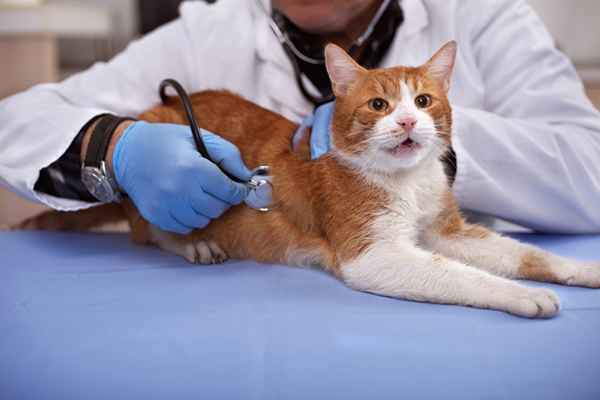
2. Positive Socialization: Building Trust
Socialization plays a crucial role in reducing your cat’s anxiety at the vet clinic. Consider the following strategies to promote positive associations:
- Invite friends or family members to visit and interact with your cat at home.
- Reward your furry friend with treats and pets whenever they engage positively with new individuals.
- Gradually increase the diversity of social interactions to mimic the veterinary environment.
FAQs: Training Your Cat for Vet Visits
- How long will it take to train my cat for stress-free vet visits?
The duration of the training process varies for each cat, depending on their personality and previous experiences. Patience and consistency are key. - What if my cat becomes stressed during training sessions?
If your cat becomes overwhelmed or stressed during training sessions, take a step back and start with smaller, more manageable steps. Gradually work your way up to more challenging scenarios. - Can I use sedatives to calm my cat during vet visits?
It is essential to consult with your veterinarian before administering any sedatives to your cat. Sedation should only be used under professional guidance.
Conclusion
Training your cat for stress-free vet visits is a rewarding journey that enhances their well-being and strengthens the bond between you and your feline companion. By understanding their fears, acclimating them to the carrier, and familiarizing them with handling, you can provide a more relaxing experience for your pet.
Remember, patience, consistency, and positive reinforcement are essential in achieving stress-free care for your beloved cat, ensuring they receive the veterinary attention they need while feeling safe and loved.
Also Read:
